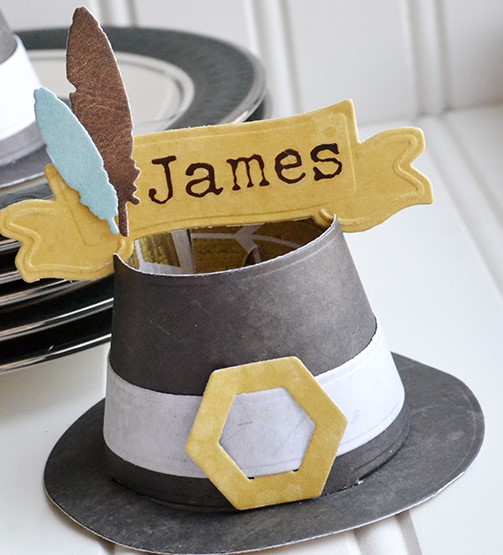 An early childhood memory is my second-grade Thanksgiving classroom party. We decorated our space, and dressed in paper Pilgrim hats and belt buckles to receive parents who pretended to be astonished by our creativity. The affair stamped a lasting, positive image of American Thanksgiving on an 8-year-old heart. But not everyone shares this view of the “quintessential American holiday.”
An early childhood memory is my second-grade Thanksgiving classroom party. We decorated our space, and dressed in paper Pilgrim hats and belt buckles to receive parents who pretended to be astonished by our creativity. The affair stamped a lasting, positive image of American Thanksgiving on an 8-year-old heart. But not everyone shares this view of the “quintessential American holiday.”
Robert Jensen writes, in “Why We Shouldn’t Celebrate Thanksgiving,”
After years of being constantly annoyed and often angry about the historical denial built into Thanksgiving Day, I published an essay in November 2005 suggesting we replace the feasting with fasting and create a National Day of Atonement to acknowledge the genocide of indigenous people that is central to the creation of the United States.
I expected criticism from right-wing and centrist people, given their common commitment to this country’s distorted self-image that supports the triumphalist/supremacist notions about the United States so common in conventional politics, and I got plenty of such critique. But I was surprised by the resistance from liberals, including a considerable number of my friends.
The most common argument went something like this: OK, it’s true that the Thanksgiving Day mythology is rooted in a fraudulent story — about the European invaders coming in peace to the “New World,” eager to cooperate with indigenous people — which conveniently ignores the reality of European barbarism in the conquest of the continent. But we can reject the culture’s self-congratulatory attempts to rewrite history, I have been told, and come together on Thanksgiving to celebrate the love and connections among family and friends.
Confusion about the origins of Thanksgiving
The “fraudulent story” terminology is applied to the idyllic vision evoked by my schoolroom experience. People of Jensen’s persuasion reject this picture as false. In an effort to substantiate their claim, some quote William Bradford’s History of the Plimouth Plantation, which includes the following description of the victory of settlers over the indigenous Pequot tribe.
Those that scraped the fire were slaine with the sword; some hewed to peeces, others rune throw with their rapiers, so as they were quickly dispatchte, and very few escapted. It was conceived they thus destroyed about 400 at this time. It was a fearful sight to see them thus frying in the fyer, and the streams of blood quenching the same, and horrible was the stincke and sente there of, but the victory seemed a sweete sacrifice, and they gave the prayers thereof to God, who had wrought so wonderfully for them, thus to inclose their enemise in their hands, and give them so speedy a victory over so proud and insulting an enimie.
Thanksgiving naysayers point to such language as clear indication that the holiday is rooted in genocide and its celebration has no place in a “woke” society.
But early European newcomers must not be dumped into one history bin. Nor should all the tribal people they met, for that matter. Some Indians received the immigrants with friendship; others became hostile. Some settlers—including the Pilgrims—approached their new neighbors in Christian charity and integrity. Others, including some of the later Puritans, were less pacific.
Bottom line: the Pilgrims and the Puritans are two different groups. It’s easy to confuse them: similar name, similar stories, two religious communities who came from Europe to the New World in the early 17th century. But the distinctions matter.
Pilgrims and Wampanoags celebrated the first Thanksgiving
 The Pilgrims arrived in 1620, people of deep Christian character and commitment. They bought (not stole) land from the local Wampanoag tribe and became friends with their chief, Massasoit. In fact, the Pilgrims and the Wampanoag entered into a treaty which lasted 54 years, from 1621 to 1675. Two years into the treaty, Massasoit warned the Pilgrims that the Massachusetts tribe was gathering allies to attack the Pilgrims, who then decided to strike first and saved their little company from annihilation.
The Pilgrims arrived in 1620, people of deep Christian character and commitment. They bought (not stole) land from the local Wampanoag tribe and became friends with their chief, Massasoit. In fact, the Pilgrims and the Wampanoag entered into a treaty which lasted 54 years, from 1621 to 1675. Two years into the treaty, Massasoit warned the Pilgrims that the Massachusetts tribe was gathering allies to attack the Pilgrims, who then decided to strike first and saved their little company from annihilation.
The treaty was eventually broken, not by the Pilgrims, but by the son of Massasoit, who became chief after his father died.
American Thanksgiving is rooted in the Pilgrim story, and that of Squanto, who was used of God to save the Pilgrims by teaching them survival skills and introducing them to local tribes. The Pilgrims—53 in number—invited the Indians to a thanksgiving celebration. They took great care to treat them according to biblical principles and walked with them in friendship. This was the setting of the first Thanksgiving.
Does the ensuing history of the USA include deceitful and genocidal treatment of the American Indians? Without question. But events in the years and decades following this first, amicable meeting of Europeans and Native Americans should not invalidate the inauguration, or preclude the celebration, of Thanksgiving.
As for the appalling quote, yes, it is real. As noted above, the source is William Bradford’s History of Plimouth Plantation. Bradford was a Pilgrim who became leader of the Plymouth Colony a year after it was founded. These are not his words. He is quoting Gov. John Winthrop of the Puritans, who arrived ten years after the Pilgrims and settled in New England in the thousands. In the context, Winthrop was describing the Puritan war with the Pequot, an aggressive tribe that made war against other Indian neighbors as well as Europeans, and asking the Pilgrims to send men and arms to help them.
Puritan-Pequot War
From today’s vantage, the 500-year-old quote is reprehensible. But it was spoken in the context of war (between the Pequot and the Puritans plus other tribes), war in which people from both sides were being killed. When we read it from the perspective of our 21st-century sensibilities, and in the mistaken belief that it is describing oppression rather than war, it is especially horrible language. But it needs to be read in its original context as a record of deliverance from one’s enemies, in a day when such language was not unusual. In fact, it could be compared to language from a more ancient conqueror,
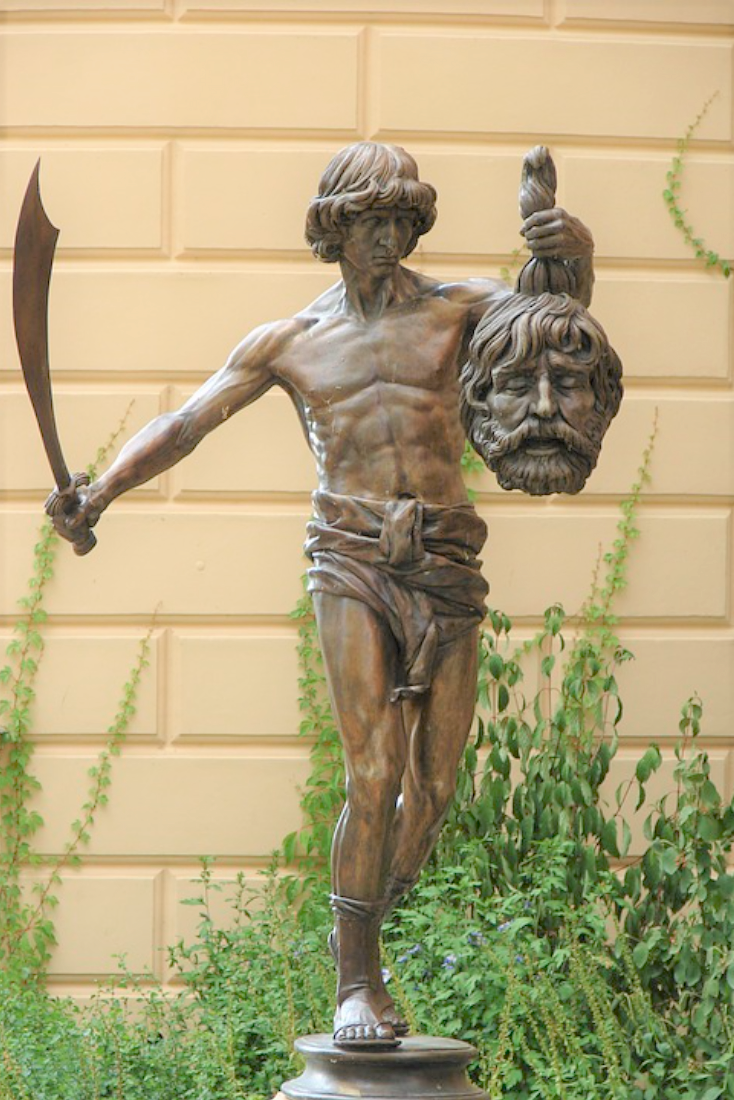 I pursued my enemies and overtook them; I did not turn back till they were destroyed. I crushed them so that they could not rise; they fell beneath my feet. You armed me with strength for battle; you made my adversaries bow at my feet. You made my enemies turn their backs in flight, and I destroyed my foes. They cried for help, but there was no one to save them– to the LORD, but he did not answer. I beat them as fine as dust borne on the wind; I poured them out like mud in the streets.¹
I pursued my enemies and overtook them; I did not turn back till they were destroyed. I crushed them so that they could not rise; they fell beneath my feet. You armed me with strength for battle; you made my adversaries bow at my feet. You made my enemies turn their backs in flight, and I destroyed my foes. They cried for help, but there was no one to save them– to the LORD, but he did not answer. I beat them as fine as dust borne on the wind; I poured them out like mud in the streets.¹
For their part, the conquered are also capable of graphic language to express their desire for revenge.
O Daughter of Babylon, doomed to destruction, happy is he who repays you for what you have done to us–he who seizes your infants and dashes them against the rocks.²
US citizens and residents should feel free to celebrate Thanksgiving Day without guilt. Its legacy has nothing to do with the Puritan-Pequot war.
For a much more robust and thorough treatment of the subject, read David Barton‘s exhaustively documented article, “No, Revisionists, Thanksgiving is not a Day of Mourning.”
– Gary Brumbelow. Elizabeth Youmans and Scott Allen contributed to this article.
¹Psa 18:37-42 NIV
²Psa 137:8-9 NIV

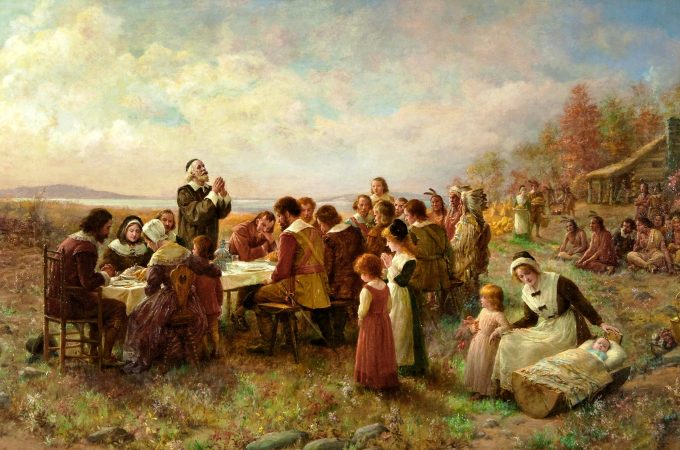


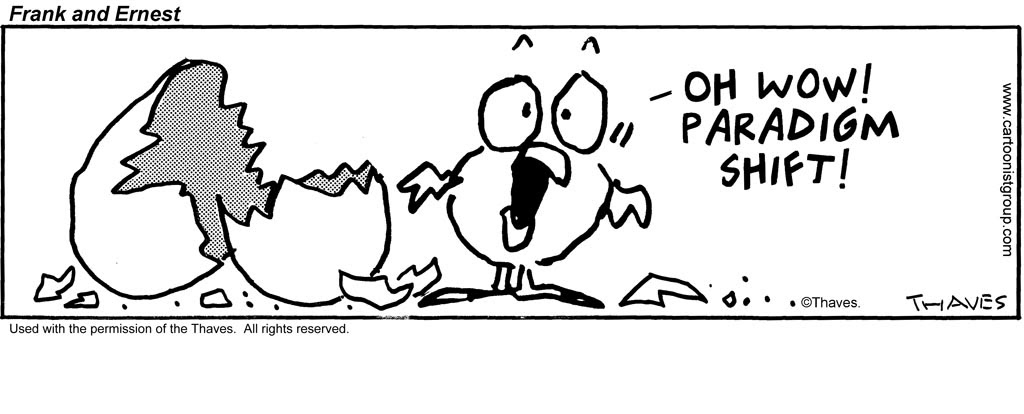
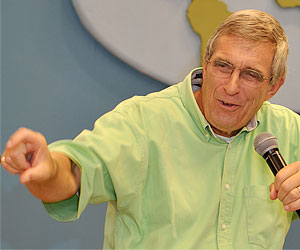

4 Comments
Greg Janos
November 22, 2018 - 9:35 amgood comment except perhaps using Barton as a reference. A not very reliable source.
admin
November 26, 2018 - 5:59 amNevertheless he documents his article very carefully and thoroughly.
Gary
Bob Evans
November 22, 2018 - 10:43 pmGary,
Thank you for these comments. Thank you for reminding us of redemptive moments in our history, despite the naysayers who seem only able to cast blame, and empower themselves on the pain of victims, rather than point ways ahead. I say this having just finished watching an incredibly powerful movie of a man’s struggle to come to terms with his history and walk rightly with some of the very people he’d been in conflict with his entire career. The movie is “Hostiles” starring Christian Bales.
WARNING – though stunningly filmed, and powerfully written, this movie is not for the squeamish. It concerns a US Calvary captain who spent his entire career on the Western frontier in the various conflicts with different tribes. He is ordered to escort a prominent Cheyenne chief who has been incarcerated in New Mexico for a number years, and his family back to traditional Cheyenne lands in Montana. The chief is dying of cancer and has received Presidential pardon and release to return home to die and be buried with his ancestors. Along the way they come across a woman whose family had just been slaughtered by renegade Comanche (who subsequentially attack the party). The movie deals powerfully with the complex attitudes, emotions, beliefs, and treatment of “the other” in that day, including some terse put powerful direct statements of Christian belief (which both the capitan & woman profess to hold).
This movie, both in its subject and its excellence, is a powerful example of the prophetic art of the balladeer spoken of here at Darromillerandfriends. If one looks, one can hear the call (yes, deliberate language, for the “call” is as much, or more, in the visual as in the dialogue) to find a way to walk past prior hurts between people and find a way forward. A fitting movie to watch as we give thanks and remember, as this article calls us to, the redemptive part of our national history that occurred alongside the broken parts.
Bob Evans
admin
November 26, 2018 - 5:57 amThanks for the tip, Bob. Sounds like a worthy production.
Gary